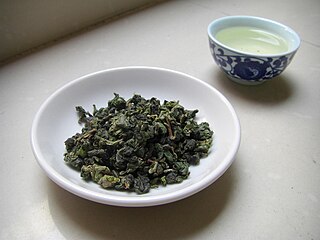Discover How to Prepare Oolong Tea and More
I've run into quite a few individuals who don't enjoy how tea tastes,
but I tend to believe that most likely, they simply have never drank tea
that was brewed using the right way. Owing to various teas having their
own brewing process, many individuals are understandably in the dark as
to how to prepare them in the proper way. And when you make an important
error, you'll get a bad tasting cup of tea. No worries, though, since
you can generally use almost any process for just about any style of
tea. Being mindful of a small number of critical elements is really all
it takes and I'll show you those below.
How about we start with
the easiest one. Black tea doesn't generally present any problems for
most persons. Basically, use boiling water and let the leaves steep for a
couple of minutes. This technique will do well for Assam tea and all of
the popular Chinese teas, Ceylon teas or Nepalese teas. Darjeeling tea
musn't be prepared with this way, however. Due to the fact that it is
pretty much an oolong tea, meaning it is not completely oxidized, it
should be made using colder water (80-90ºC or 180-194ºF).
With a
large variance in the way of preparation among varieties of green tea,
they can be quite a bit more difficult to brew well. The correct water
temperature and the steeping times are the main two factors you
definitely must do right. Pretty much all green teas are best brewed
using a temperature of about 80°C (176°F).
Definitely use a
significantly colder 50°C–60°C (122°F–140°F) for the exceptional quality
Japanese tea gyokuro, however. One additional exception is Houjicha, a
roasted Japanese tea. Perhaps the most difficult possible tea to make
incorrectly, it can simply be brewed employing boiling water. Check the
guidelines on the packaging for a good steeping time to use first. If
you don't have the packaging or if you can't find any guidelines printed
there, simply try beginning with a steeping time of two minutes for all
other teas and a minute and a half for gyokuro.
Matcha green tea
powder is completely unlike all the other green teas. As you might
guess from the name, it's a powder and as such, it needs unique utensils
and a different and somewhat complicated way of brewing. If you've ever
before enjoyed a Japanese tea ceremony, you've witnessed the making of
matcha. I would prefer not to go off on a tangent of several thousand
words, so I'll postpone running headfirst into any details on the
brewing method for this high quality tea.
Also a little more
tasking to make properly is white tea. It is made up of new leaves,
which means they are somewhat more delicate and thus necessitate a lower
water temperature than any other type of tea. 75-80°C (167-176°F) is
best for both White Hair Silver Needle and White Peony teas. 2-3 minutes
is a good starting place for steeping times; adjust from there until
you're happy with the result. Increasing the steeping time should make
your tea more astringent, while decreasing it will yield a milder cup.
The
toughest kind of tea to make properly, apart from matcha, is oolong
tea. The traditional gongfu method of brewing uses a number of short
infusions using a heaping amount of leaves. You can easily get a tasty
cup by sticking to normal methods, however. Just make sure to pay attention to the water temperature: it needs to be just slightly below 100°C.
I
understand the instructions I've presented are very simplistic. It goes
without saying, the perfect results are attained by using the specific
brewing guidelines for each individual kind of tea. Most people don't
have the proper guidelines or the specific utensils they need and if
that describes you, employing my guidelines will give you a good cup of
tea, no matter the kind used. Should you have in the past determined you
can't stand the taste of tea, ideally reading this will inspire you to
give the world's most loved beverage, not counting water, a second try.
You absolutely won't regret it.
